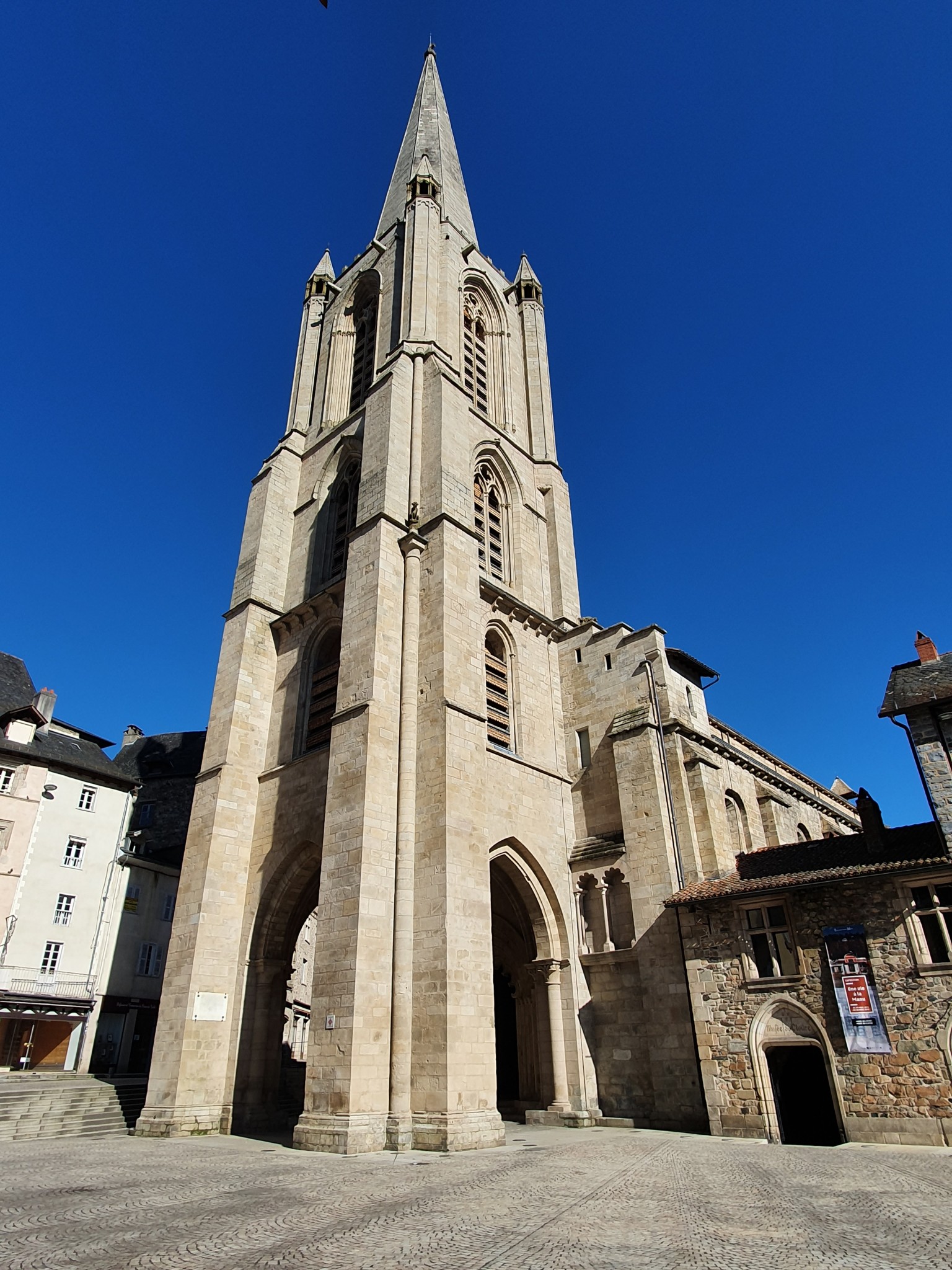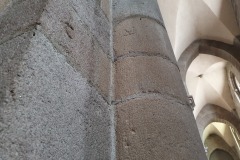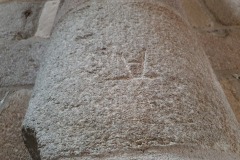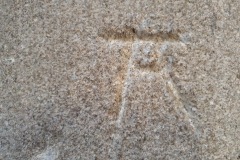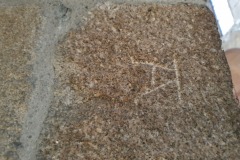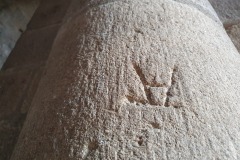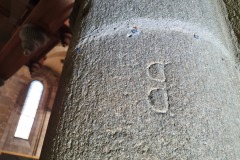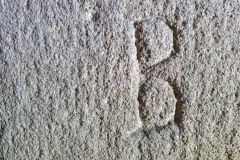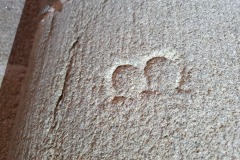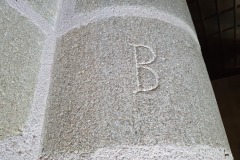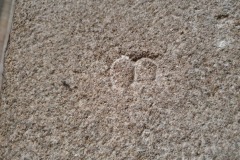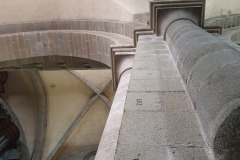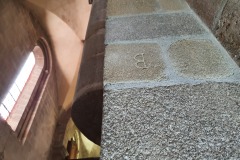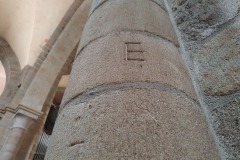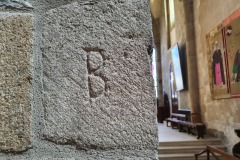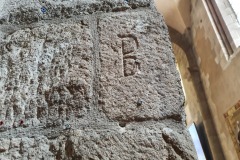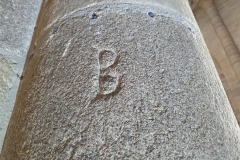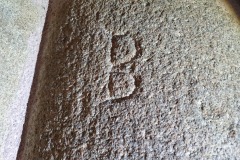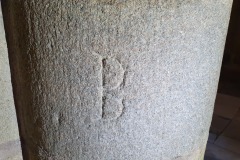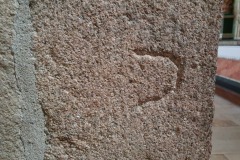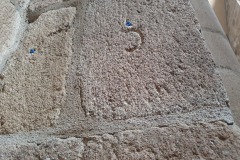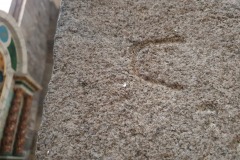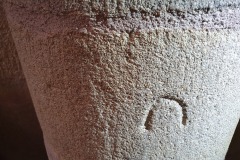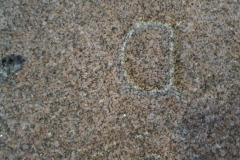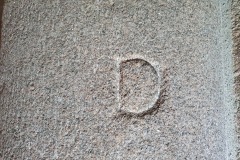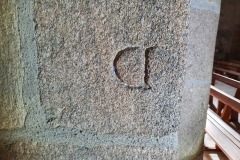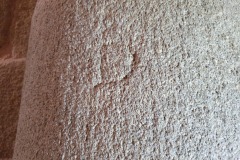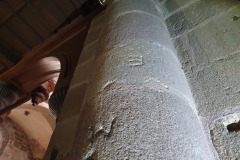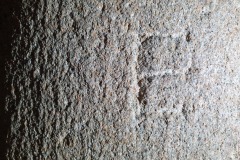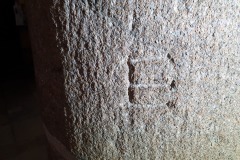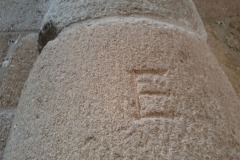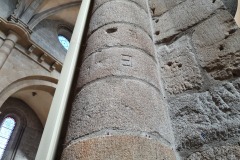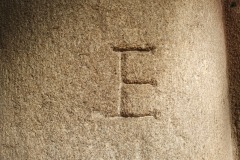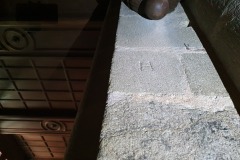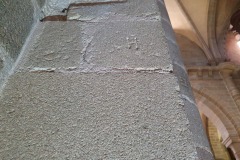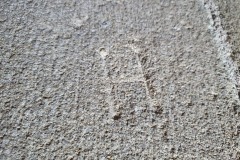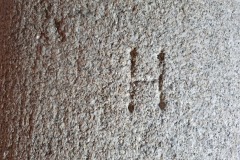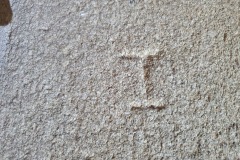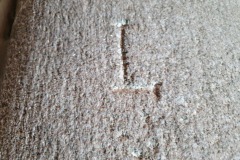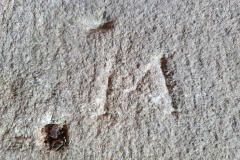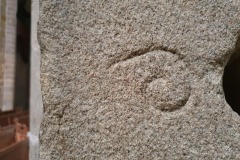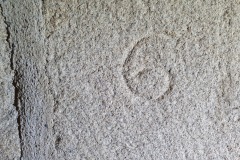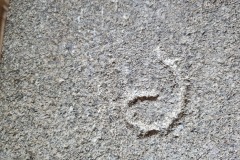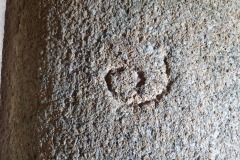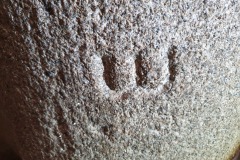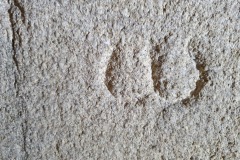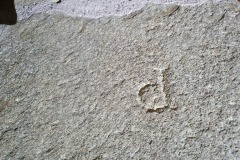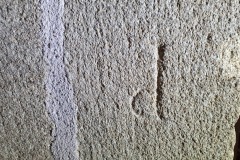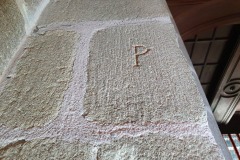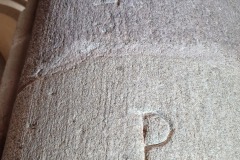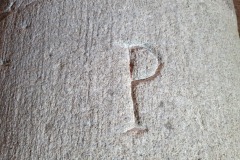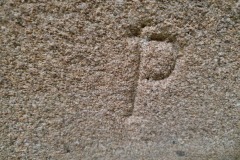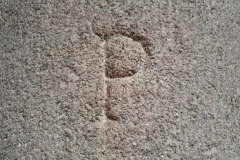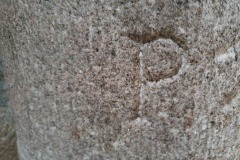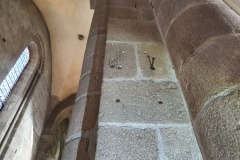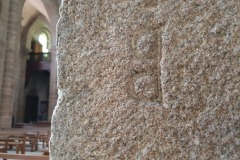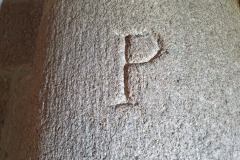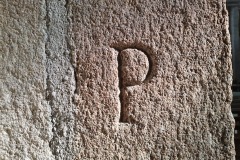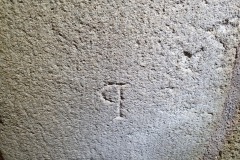Notre Dame de Tulle is a Roman Catholic cathedral in the town of Tulle in the Corrèze region of France. An abbey has existed at Tulle since the 7th century. It prospered under the rule of Saint-Benoit. In 1317, the abbey became a cathedral and Abbot Arnaud de Saint-Astier became its first bishop.
Due to delays in its construction, the architecture went from Romanesque to Gothic style resulting in the pillars being a Romanesque with the vault of the nave Gothic. The 75 metre tall bell tower dates to the 14th century.
On 27th November 1793, the cathedral was closed for worship and the building was looted. Later a cannon factory was established there. The church reopened for worship in 1822.
No graffiti was found anywhere on the ground floor of the cathedral. It was not possible to visit the bell tower. However, the Romanesque pillars contain numerous masons’ marks of various, most taking the form of letters of the alphabet, namely A, B, C, D, E, H, I, L, M, lower case omega and a spiral. There is a mix of marks on every pillar, with the marks stretching as far as the eye can see upwards.
The cathedral has an even wider array of marks than those seen in the churches of St Martin in Brive-la-Gaillard, Corrèze and the church of St Yrieix-la-Perche, Haute-Vienne. The masons’ marks appear in a variety of orientations and it is clear that they were made before the blocks were placed in situ. Some letters occasionally appear to have been reversed.
Report by Linda Wilson
Place Gambetta
19000 Tulle
France
There is ample parking in Tulle, some of which (including the parking very close to the cathedral) is free at weekend.
Search terms: France, cathedral, mason’s marks, A, B, C, D, E, H, I, L, M, spiral, omega (lower case)

